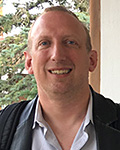Simulating Field Theory in the Light-Front Formulation
Simulating Field Theory in the Light-Front Formulation
-
 1. Quantum Simulation of quantum …
0
00:00/00:00
1. Quantum Simulation of quantum …
0
00:00/00:00 -
 2. NISQ and beyond
196.83016349683018
00:00/00:00
2. NISQ and beyond
196.83016349683018
00:00/00:00 -
 3. A Quantum Computer for Chemist…
327.52752752752752
00:00/00:00
3. A Quantum Computer for Chemist…
327.52752752752752
00:00/00:00 -
 4. Simulating Fermions on a Quant…
446.78011344678015
00:00/00:00
4. Simulating Fermions on a Quant…
446.78011344678015
00:00/00:00 -
 5. Two ways to simulate time evol…
559.09242575909241
00:00/00:00
5. Two ways to simulate time evol…
559.09242575909241
00:00/00:00 -
 6. NISQ applications - Variationa…
702.635969302636
00:00/00:00
6. NISQ applications - Variationa…
702.635969302636
00:00/00:00 -
 7. Variational Quantum Eigensolve…
898.03136469803144
00:00/00:00
7. Variational Quantum Eigensolve…
898.03136469803144
00:00/00:00 -
 8. Nasty, brutish and short: VQE …
1031.6649983316649
00:00/00:00
8. Nasty, brutish and short: VQE …
1031.6649983316649
00:00/00:00 -
 9. From Quantum Chemistry to Quan…
1103.5368702035369
00:00/00:00
9. From Quantum Chemistry to Quan…
1103.5368702035369
00:00/00:00 -
 10. RESEARCH ARTICLE
1324.3243243243244
00:00/00:00
10. RESEARCH ARTICLE
1324.3243243243244
00:00/00:00 -
 11. Static observable in QCD - the…
1443.2432432432433
00:00/00:00
11. Static observable in QCD - the…
1443.2432432432433
00:00/00:00 -
 12. The Light Front formulation
1552.0854187520854
00:00/00:00
12. The Light Front formulation
1552.0854187520854
00:00/00:00 -
 13. Two requirements of fundamenta…
1630.5305305305305
00:00/00:00
13. Two requirements of fundamenta…
1630.5305305305305
00:00/00:00 -
 14. Forms of Relativistic Dynamics
1717.5508842175509
00:00/00:00
14. Forms of Relativistic Dynamics
1717.5508842175509
00:00/00:00 -
 15. Lorentz transformations in the…
1840.3737070403738
00:00/00:00
15. Lorentz transformations in the…
1840.3737070403738
00:00/00:00 -
 16. Start with a simple model
1907.0737404070737
00:00/00:00
16. Start with a simple model
1907.0737404070737
00:00/00:00 -
 17. Light-Front quantization in 1+…
2151.9853186519854
00:00/00:00
17. Light-Front quantization in 1+…
2151.9853186519854
00:00/00:00 -
 18. Start with a simple model in 1…
2249.8498498498498
00:00/00:00
18. Start with a simple model in 1…
2249.8498498498498
00:00/00:00 -
 19. Light-Front Fock space in 1+1 …
2331.4314314314315
00:00/00:00
19. Light-Front Fock space in 1+1 …
2331.4314314314315
00:00/00:00 -
 20. What is the meaning of Harmoni…
2348.4818151484819
00:00/00:00
20. What is the meaning of Harmoni…
2348.4818151484819
00:00/00:00 -
 21. Interacting theory
2426.3263263263266
00:00/00:00
21. Interacting theory
2426.3263263263266
00:00/00:00 -
 22. What do we want to compute?
2534.3343343343345
00:00/00:00
22. What do we want to compute?
2534.3343343343345
00:00/00:00 -
 23. Parton Distribution Function
2558.324991658325
00:00/00:00
23. Parton Distribution Function
2558.324991658325
00:00/00:00 -
 24. Compact Mapping to Qubits in 1…
2591.9586252919589
00:00/00:00
24. Compact Mapping to Qubits in 1…
2591.9586252919589
00:00/00:00 -
 25. Simulation cost in 1+1D
2686.353019686353
00:00/00:00
25. Simulation cost in 1+1D
2686.353019686353
00:00/00:00 -
 26. Compact Mapping to Qubits in 3…
2825.7257257257256
00:00/00:00
26. Compact Mapping to Qubits in 3…
2825.7257257257256
00:00/00:00 -
 27. Counting qubits for 3+1D QCD
2893.2265598932267
00:00/00:00
27. Counting qubits for 3+1D QCD
2893.2265598932267
00:00/00:00 -
 28. Light-Front simulations on NIS…
2944.6112779446112
00:00/00:00
28. Light-Front simulations on NIS…
2944.6112779446112
00:00/00:00 -
 29. BLFQ in 3 + 1D
3053.3867200533869
00:00/00:00
29. BLFQ in 3 + 1D
3053.3867200533869
00:00/00:00 -
 30. BLFQ in 3 + 1D
3126.8601935268603
00:00/00:00
30. BLFQ in 3 + 1D
3126.8601935268603
00:00/00:00 -
 31. BLFQ in 3 + 1D
3151.9185852519186
00:00/00:00
31. BLFQ in 3 + 1D
3151.9185852519186
00:00/00:00 -
 32. BLFQ in 3 + 1D
3213.0463797130465
00:00/00:00
32. BLFQ in 3 + 1D
3213.0463797130465
00:00/00:00 -
 33. Errors: mass
3277.8111444778115
00:00/00:00
33. Errors: mass
3277.8111444778115
00:00/00:00 -
 34. Errors: charge radius
3297.3973973973975
00:00/00:00
34. Errors: charge radius
3297.3973973973975
00:00/00:00 -
 35. Summary
3328.8621955288622
00:00/00:00
35. Summary
3328.8621955288622
00:00/00:00
 Peter J. Love is an assistant professor of physics and astronomy at Tufts University.
Peter J. Love is an assistant professor of physics and astronomy at Tufts University.